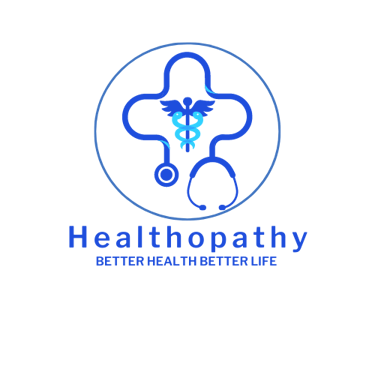From Darkness to Light: Overcoming Borderline Personality Disorder (BPD)
From Darkness to Light: Overcoming Borderline Personality Disorder (BPD) is an inspiring and informative blog that offers a comprehensive guide to understanding and managing BPD. This blog sheds light on the challenges and realities of living with BPD and provides practical strategies for coping with the condition. Whether you or someone you know is affected by BPD, this blog offers insights and hope for those looking to overcome the challenges of this often-misunderstood condition.
MENTAL HEALTH
Borderline personality disorder (BPD) is a mental health condition characterized by a pattern of instability in mood, behavior, and self-image. People with BPD may experience intense emotions, difficulty forming and maintaining relationships, impulsivity, and a distorted sense of self. The condition affects approximately 1.6% of adults in the United States and can significantly impact an individual's quality of life.
Living with BPD can be challenging, but with proper treatment and support, individuals can manage the symptoms and lead fulfilling lives. This blog explores the journey from darkness to light and offers practical strategies for overcoming BPD.
Understanding BPD
BPD is a complex and often-misunderstood condition. People with BPD may experience intense emotions, such as anxiety, anger, or sadness, that can quickly shift and lead to impulsive or self-destructive behavior. These emotional shifts can cause difficulty in relationships and interfere with daily life.
One of the key features of BPD is the instability of self-image. Individuals with BPD may struggle with their identity and have a distorted sense of self. They may also experience feelings of emptiness, and struggle with finding meaning and purpose in their lives.
Managing BPD
The journey from darkness to light involves a comprehensive approach to managing BPD. Treatment for BPD typically involves a combination of medication and therapy. Medications, such as antidepressants, mood stabilizers, and antipsychotics, may be used to help manage symptoms.
Therapy is an essential component in the management of BPD. Dialectical behavior therapy (DBT) is a commonly used approach in the treatment of BPD. DBT focuses on teaching individuals coping skills to manage intense emotions, regulate mood, and improve interpersonal relationships. Cognitive-behavioral therapy (CBT) and psychodynamic therapy may also be helpful for some individuals.
In addition to medication and therapy, there are several self-care strategies that can help individuals manage their BPD. One of the most effective strategies is building a support network of friends, family members, or support groups who can provide encouragement and support during challenging times. Engaging in activities that promote relaxation, such as meditation, yoga, or exercise, can also help manage stress and improve mood.
It is also important for individuals with BPD to establish and maintain healthy boundaries. Setting boundaries can help prevent burnout and promote self-care. In addition, individuals with BPD should prioritize self-compassion and self-care, recognizing that managing the condition can be a challenging and ongoing process.
Overcoming BPD
Overcoming BPD involves an ongoing commitment to self-care, therapy, and medication management. Recovery from BPD is possible, but it can take time and patience. The journey from darkness to light requires a deep understanding of the condition, a willingness to seek help, and a commitment to self-improvement.
The journey to recovery is different for everyone, but there are several common themes that can help individuals with BPD navigate the process. These include:
Acceptance: Accepting the condition and recognizing that recovery is possible
Education: Learning about BPD and understanding the symptoms and treatment options
Treatment: Seeking out professional help and engaging in therapy and medication management
Self-care: Prioritizing self-care, setting healthy boundaries, and engaging in stress-reducing activities
Support: Building a support network of individuals who can provide encouragement and support during difficult times
CONCLUSION
In conclusion, BPD is a challenging condition, but with the right treatment and support, individuals can overcome the challenges and live fulfilling lives. The journey from darkness to light requires a deep commitment to self-care, therapy, and medication management, but it is possible to overcome the condition and achieve stability. Seeking help from a qualified mental health professional is the first step in getting treated.
While treatment and support are essential for managing BPD, it is also important for individuals with the condition to take an active role in their recovery. One of the key components of recovery is learning how to manage triggers and cope with stress. Triggers can vary from person to person, but common triggers for individuals with BPD include abandonment, rejection, and conflict.
Learning to recognize and manage triggers can help individuals with BPD maintain emotional stability and avoid impulsive or self-destructive behavior. Coping strategies for managing triggers include deep breathing exercises, journaling, mindfulness practices, and other stress-reducing activities.
It is also important for individuals with BPD to develop a sense of self-awareness and emotional regulation. Mindfulness practices, such as meditation or yoga, can help individuals become more aware of their thoughts and emotions and learn to regulate their mood. Learning to identify and challenge negative thoughts and beliefs can also be an effective way to manage emotional instability and improve self-esteem.
Another important aspect of recovery is finding a sense of purpose and meaning in life. For individuals with BPD, developing a sense of identity and finding meaningful activities can help build self-esteem and promote emotional stability. Volunteering, pursuing hobbies, and engaging in creative pursuits are all ways that individuals with BPD can find meaning and purpose in their lives.
While recovery from BPD can be a challenging and ongoing process, it is important to remember that it is possible. With the right treatment and support, individuals with BPD can learn to manage their symptoms and lead fulfilling lives. The journey from darkness to light involves a commitment to self-care, education, and treatment, as well as a willingness to seek help and support when needed. By taking an active role in their recovery, individuals with BPD can overcome the challenges of the condition and find hope for a brighter future.
